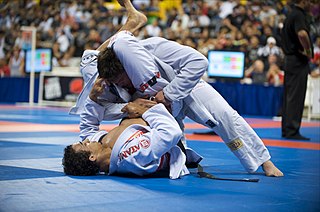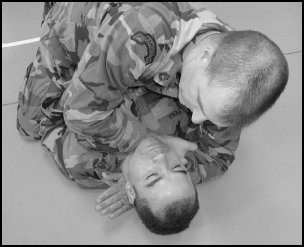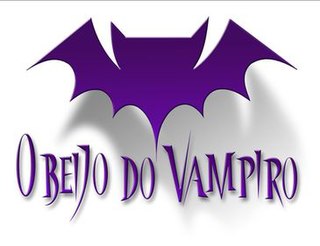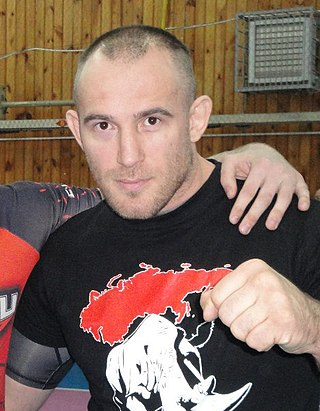Related Research Articles

Brazilian jiu-jitsu, often abbreviated to BJJ, is a self-defense martial art and combat sport based on grappling, ground fighting, and submission holds. It is primarily a ground-based fighting style and focuses on taking one's opponent down to the ground, gaining a dominant position, and using a number of techniques to force them into submission via joint locks, chokeholds, or compression locks.

A chokehold, choke, stranglehold or, in Judo, shime-waza is a general term for a grappling hold that critically reduces or prevents either air (choking) or blood (strangling) from passing through the neck of an opponent. The restriction may be of one or both and depends on the hold used and the reaction of the victim. While the time it takes for the choke to render an opponent unconscious varies depending on the type of choke, the average across all has been recorded as 9 seconds.

The guillotine choke, also known as Mae Hadaka Jime in judo, is a chokehold in martial arts applied from in front of the opponent, often on the ground but can also be done while standing. The choke involves using the arms to encircle the opponent's neck that bears a resemblance to the blade of a guillotine.
A triangle choke, or sankaku-jime (三角絞) in judo, is a type of figure-four chokehold that encircles the opponent's neck and one arm with the legs in a configuration similar to the shape of a triangle. Applying pressure using both legs and the opponent's own shoulder, the technique is a type of lateral vascular restraint that constricts the blood flow from the carotid arteries to the brain, potentially resulting in loss of consciousness in seconds when applied correctly. Recent studies have shown that the triangle choke takes an average of 9.5 seconds to render an opponent unconscious from the moment it is properly applied.

Clinch fighting or trapping is the part of stand-up fighting where the combatants are grappling in a clinch, typically using clinch holds. Clinching the opponent can be used to eliminate the opponent's effective usage of some kicks, punches, and melee weapons. The clinch can also be used as a medium to switch from stand-up fighting to ground fighting by using takedowns, throws or sweeps.

A grappling hold, commonly referred to simply as a hold that in Japanese is referred to as katame-waza, is any specific grappling, wrestling, judo, or other martial art grip that is applied to an opponent. Grappling holds are used principally to control the opponent and to advance in points or positioning. The holds may be categorized by their function, such as clinching, pinning, or submission, while others can be classified by their anatomical effect: chokehold, headlock, joint-lock, or compression lock. Multiple categories may be appropriate for some of these holds.

Arm triangle choke, side choke, or head and arm choke are generic terms describing blood chokeholds in which the opponent is strangled in between their own shoulder and the practitioner's arm. This is as opposed to the regular triangle choke, which denotes a chokehold using the legs, albeit with a similar mechanism of strangulation against the opponent's own shoulder. An arm triangle choke where the practitioner is on the side of the opponent and presses a forearm into the opposite side of the neck of the opponent is known as a side choke, such as from the kata-gatame hold. The time it takes for the opponent to be rendered unconscious does vary depending on the configuration of the grip and position, although the standard arm triangle is one of the fastest at 7.2 seconds.

The Order of Augustinian Recollects (OAR) is a mendicant Catholic religious order of friars and nuns. It is a reformist offshoot from the Augustinian hermit friars and follows the same Rule of St. Augustine. They have also been known as the "Discalced Augustinians".

Sode guruma jime (袖車絞め) is a type of Judo chokehold (shime-waza), which compresses the opponent’s trachea or the carotid arteries.

Ezequiel Iván "Pocho" Lavezzi is an Argentine former professional footballer who played as a forward. During his career, his most important attributes were his pace, hardworking style of play, technique, creativity, and dribbling ability; although he was usually deployed as a winger, he was also used as a second striker or as an attacking midfielder on occasion.

O Beijo do Vampiro is a Brazilian telenovela that was produced and aired by Rede Globo from August 26, 2002 to May 3, 2003, totaling 215 chapters, substituting Desejos de Mulher and preceding Kubanacan.

Aleksei Alexeyevich Oleinik is a Russian mixed martial artist and combat sambo fighter who fought for the Ultimate Fighting Championship, competing in their heavyweight division. He began his professional fighting career in 1997, and is a veteran of M-1 Global, ProFC and IAFC and has competed for Bellator, KSW and YAMMA Pit Fighting. He is one of only two fighters to win a UFC fight via Ezekiel choke, and has done so twice. Oleinik also holds the record for most Ezekiel choke wins in MMA competition, with fourteen.

Alexander Yevgenyevich Volkov is a Russian professional mixed martial artist. He currently competes in the Heavyweight division of the Ultimate Fighting Championship (UFC). A professional MMA competitor since 2009, Volkov previously competed for the M-1 Global promotion, as well as Bellator MMA. He is a former heavyweight champion in both promotions. As of July 2, 2024, he is #3 in the UFC heavyweight rankings.
Ezequiel is a given name, the Spanish version of Ezekiel. Notable people with the name include:
The Ultimate Fighter: Brazil 3 is an installment of the Ultimate Fighting Championship (UFC)-produced reality television series The Ultimate Fighter. It is the sixth series to be produced outside the United States and the third to film in Brazil.
Remco Pardoel is a retired Dutch mixed martial artist. He competed in the heavyweight division. He has fought in promotions such as the UFC, Shooto and Pancrase. He was a junior national champion in Judo in 1988, and a competitive BJJ grappler. He made his MMA debut at UFC 2, eventually losing to Royce Gracie. Over the course of his career he fought Vernon White, Minoru Suzuki, and Marco Ruas.
Ezequiel Jacinto de Biasi, simply known as Ezequiel, is a Brazilian professional footballer who plays as a right back for Amazonas.
Ezequiel Santos da Silva, simply known as Ezequiel, is a Brazilian footballer who plays as a winger for Sanfrecce Hiroshima.
Eduardo Jacinto de Biasi, simply known as Eduardo, is a Brazilian footballer who plays as a defensive midfielder for Avaí.